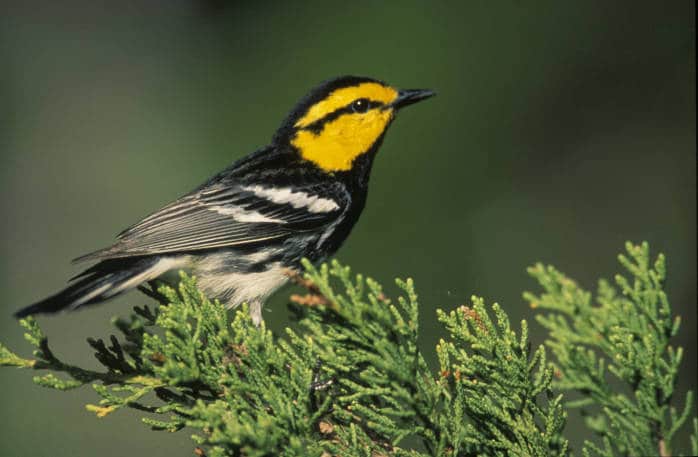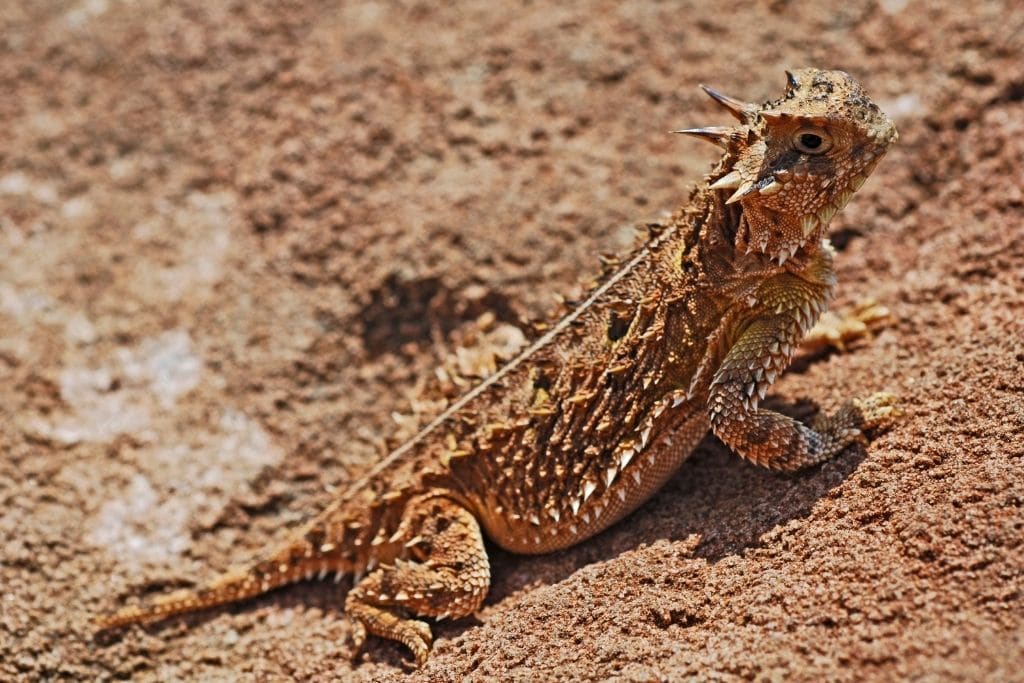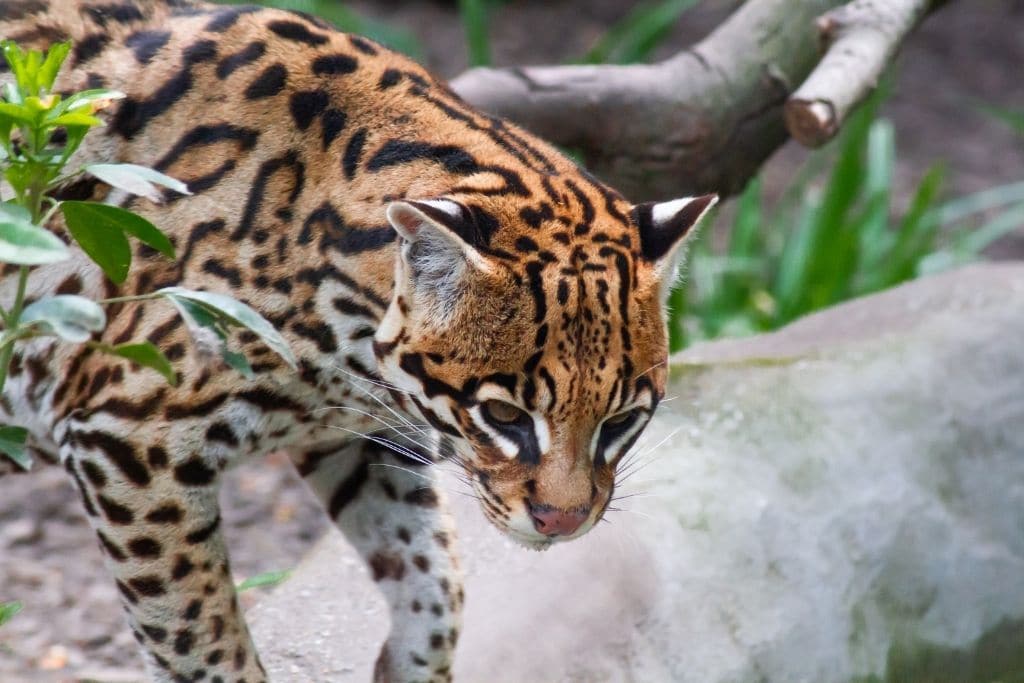Texas is not only one of the largest states in the US, but thanks to its unique geologic features and diverse landscapes – teeming with swamps, grasslands, prairies and deserts – it is also home to a rich and varied wildlife. But like most of the world, the Lone Star state has been facing significant biodiversity loss, largely due to human activity and urban development, causing many species to lose their habitats. Currently, there are nearly 150 species that are listed as threatened and another 74 that are endangered. One of the state’s most well-known and endemic animals, the ivory-billed woodpecker, was recently even declared extinct by the US Fish and Wildlife Service. It’s undeniable that time is running out to protect and recover species that are crucial for making up the ecosystem. These are just seven of the most endangered species in Texas.
—
The Most Endangered Species in Texas
1. Ocelot
This iconic spotted wildcat was once widely spread throughout North, Central, and South America. Today, they can only be found in parts of Texas, with fewer than 25 individuals left in the wild. The largest remaining population of ocelots in the US are located in the Laguna Atascosa National Wildlife Refuge in the state. Habitat loss from logging activities, and illegal fur and pet trade have been the main drivers of the species’ dramatic decline. Despite trades and imports of the animals has been banned in many parts of the world, they can still be found in local markets in Central and South America. Other threats to the species continue to loom, including increased risks of wildlife-vehicle collisions when ocelots make their way across land for food and mates.
2. Kemp’s Ridley Sea Turtles
The smallest yet the most critically endangered sea turtle species in the world, Kemp’s ridley sea turtles can only be found in the shores and waters of Gulf of Mexico, where they often nest in the beaches of Bolivar Peninsula in Texas. There, the sea turtles feed mostly on crabs, and may sometimes partake in fish, sea jellies, and mollusks. Despite some positive trends of population growth between 1997 and 2009 where numbers rose 12-19% annually, the species is once again on the decline. This could be attributed to higher mortality rates from bycatch in commercial fishing, and persistent environmental degradation and marine pollution in the species’ critical habitats across the Gulf of Mexico – most notably the Deepwater Horizon oil spill. Some estimates place only about 55 females that remain nesting in Texas every year.

Photo credit: USFWS
3. Golden-cheeked Warbler
There is only one place in the world where the golden-cheeked warbler can be found, and that is in the oak-juniper woodlands of Central Texas. It is also the only bird species with a breeding range confined to the Lone Star State. As its name suggests, the bird is easily identifiable by its bright yellow cheeks, in contrast to its black throat and back. Since 1990, the warbler has been protected under the Endangered Species Act due to threats such as habitat loss for logging and livestock grazing purposes. The species rely on dense tree canopies to forage for a variety of insects, as well as for nesting, and as habitat fragmentation for urban development continues to grow, so do nest predators such as blue jays and brown-headed cowbirds. The warbler population has dropped about 25% within 28 years, with an estimated 27,000 individuals left in Texas.
4. Whooping Crane
Native only to North America, the whooping crane is known for its stark white plumage, black-tipped features and a red cap, as well as being the tallest bird species in the region – standing at more than five feet tall. The bird was once at the brink of extinction following years of rampant, unregulated hunting for their meat and feathers and the loss of wetland habitats for agriculture and oil and gas exploration, resulting in fewer than 20 birds left by 1942. The core migratory flock can be found in the Aransas National Wildlife Refuge on the coast of Texas. After decades of dedicated conservation efforts, population numbers have recovered up to more than 800 individuals as of February 2020.
You might also like: 7 Most Critically Endangered Species in North America

5. Texas Horned Lizard
Also known as the ‘horny toad’, the Texas horned lizard is a uniquely flat-bodied reptile with many prominent spikes extending from its head as well as smaller ones along its spine. The lizard ranges from south-central United States to northern Mexico, including Texas, Oklahoma, Kansas and New Mexico, specifically in dry habitats with little to no plant cover. Horned lizard populations have been slowly disappearing despite legislation protecting the species; prior to 1967, the lizard was widely exported in the pet trade. Scientists have noted that the species can be found in half of its historic range, likely as a result of habitat alteration. This includes the urban and road developments where horned lizards tend to bask on paved roads, and are often killed by busy traffic.
6. Texas Kangaroo Rat
The Texas kangaroo rat is a rare nocturnal animal species that live in underground dens at the base or roots of a small mesquite tree, and is found mostly in the north-central region of Texas. Much like most other endangered species in Texas, threats such as habitat loss as well as plant monocultures, which leads to plants becoming too dense or overgrazing, have impacted the animal’s population numbers. The four-toed rodent is currently listed as “threatened” by the Texas Parks and Wildlife Department, and as “vulnerable” by the International Union for Conservation of Nature (IUCN), but is not under the protection of federal law.
7. Black Bears
Black bears have been overexploited for many years due to sport hunting – especially prevalent in Texas – predator control and habitat alteration, and have since become a rarity in the state. But thanks to conservation efforts over the past two decades, including implementing laws prohibiting the hunting and killing of the animal as well as research on their food sources and population ecology, the black bear has slowly been making a return. Today, the only active breeding grounds is located in West Texas but there have been more sightings of black bears across the state, which are reportedly “young transient males seeking to establish a new home range and find a female mate”. Though these are positive signs of species recovery, many threats remain; more than 95% of Texan land is privately owned, posing a risk of human-bear conflict as state residents are allowed to shoot bears if they are “defending their property”.
You might also like: 10 of the World’s Most Endangered Animals in 2022


















